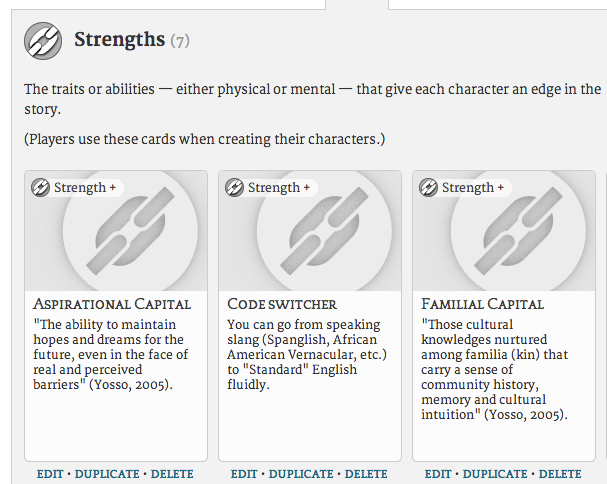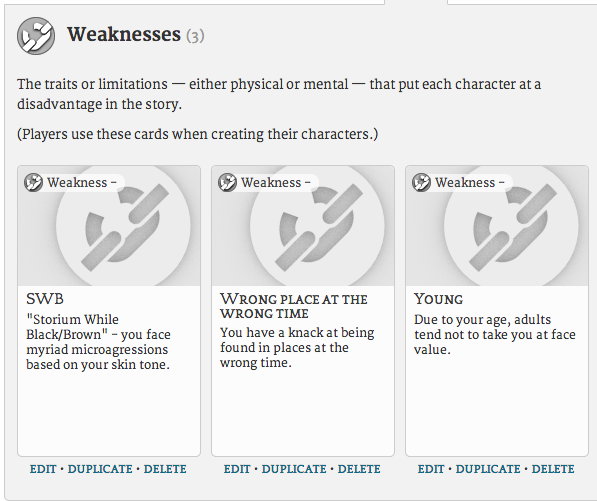As I’ve mentioned elsewhere on this blog (and at the end of this podcast), my current research focuses on tabletop roleplaying games. (I type this with bloodshot eyes and a larger-than-usual cup-o-joe after a late night session of Deadlands). I am most interested in RPGs as tools for teaching powerful civic lessons for youth. The collaborative storytelling that is often shielded behind complex game mechanics and nerdish tropes of dragons, Cthulhu, and steam punk (oh my!) are powerful spaces to consider for learning and engagement. Which is why, with just over two days left, I want to tell you about why I am excited about Storium. As described on the Kickstarter page, “Storium is a new kind of online game where you and your friends tell any story you can imagine, together.”
Anyone that backs the Kickstarter gains immediate beta access to play in/with Storium. And while the system is geared toward fantasy, genre-fiction, and roleplaying enthusiasts (there are some amazing worlds being written by a who’s who of notable authors and game designers), I am most thrilled by the pedagogical opportunities of Storium. And I’m not alone: the final, $200k stretch goal is “Storium for Schools”
The connections with history and English are immediate. Think about learning about what is most foul in Denmark by retelling the stories of the titular Hamlet. Or for youth to explore affects of imperialism from globalized, student-constructed narratives. Having played around with the narrative engine that is running Storium, that stuff seems pretty easy to do. A bit of groundwork from educators can make a ton of content-specific modules at-the-ready for teachers.
However, I’m most interested in two things with regards to Storium:
1. Having youth world build and construct their own narratives. Storium encourages a systems thinking approach. Students will have to label their environment, set the stakes, identify assets, subplots, and challenges. Strip this stuff away from a high fantasy or cyberpunk setting and you’ve got an amazing opportunity for youth to label their real, lived environment. The narrative possibilities here become lessons in civic identity and can foment action.
2. Building off of this, I want to explore how youth can explore their actual environment through virtual engagement and storytelling. I played around with this last night by creating a new story setting:

I woke up to find two players interested in this story with powerful character identities tied to politics and gender identity.
In creating a Storium world, you create character strengths, weaknesses, and other attributes (these are used as cards that are intuitively played throughout the game to help instigate narrative action). For my world, the attributes are grounded in the kinds of theories I believe are important for civic learning.

Likewise, “weaknesses” are framed around the real world challenges I’ve seen my own students face in the past.

I don’t know where this narrative will go (I’m still waiting for players, so come join me!). I am, however, enthused about this intersection of storytelling and civic engagement.
You can learn a whole lot more about Storium from the Kickstarter page. Likewise, the designers have been making the rounds on the ‘nets. Take a listen to this episode of Master Plan or this episode of Indie Talks to hear more nuanced discussion of the platform.
As I write this, the Kickstarter is currently hovering just about $167k. That’s an amazing number and signals that more than 4500 fans enthusiastic for telling stories and constructing worlds together.